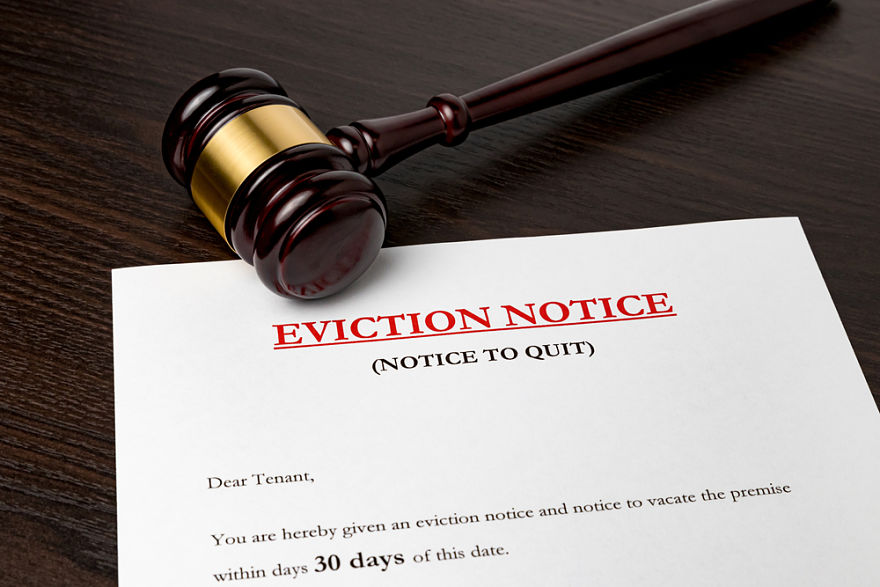Welcome, landlords and property owners, to our exploration of the intricate world of evictions! While the topic may seem complicated, even daunting, we aim to make it engaging, informative and ensure you are always within your legal right to evict a renter who violates your contract terms.
So buckle up, and let’s explore in detail the ten steps toward a successful eviction!
How to Evict Someone, Step-by-Step
Evicting a tenant can be a complex and emotionally challenging task, but fear not, for armed with the right knowledge and approach, it becomes a manageable endeavor that allows you to regain control over your property and protect your investment.
Step 1: Understand Local Laws and Regulations
Familiarize yourself with the eviction laws and regulations specific to your jurisdiction. Every region may have different requirements and timelines, so it’s crucial to know the legal framework for evictions in your area. Consult local resources like landlord-tenant handbooks or legal professionals to ensure you’re in compliance.
Step 2: Review the Lease
Thoroughly review the lease agreement signed by the tenant. Identify any clauses related to non-payment of rent, lease violations, or termination procedures. Understanding these terms will guide your eviction process and determine the grounds for eviction. Also, note any notice provisions. Can you give the tenant 3 days’ notice, or does the lease require 30?
Step 3: Issue Notices
Initiate communication with the tenant about the issue leading to the eviction. Start with a written notice. It is important to consider what you actually want. If you are willing to allow to the tenant to catch up and stay in the property, send a “Notice to Cure or Vacate”. However, if you are not willing to continue renting to the tenant, send a “Notice to Vacate” with no provision for bringing the rent current. Clearly state the reason for eviction, any remedies available, and the actions or timeline required for compliance. It is also crucial that you serve the notices correctly. The most common reason evictions get dismissed is because the notices were not served correctly.
Step 4: Maintain Documentation
Maintain a detailed record of all communication, notices, and documents you’ve sent or received throughout the eviction process. This includes copies of notices sent, receipts for deliveries, and any correspondence with the tenant. These will serve as crucial evidence in case of legal action.
Step 5: Evaluate Options for Resolution
Depending on the circumstances, consider offering alternative resolutions before proceeding with an eviction lawsuit. This could involve negotiating a repayment plan for rent arrears, addressing lease violations through a corrective action plan, or negotiating a move-out date. Exploring resolutions can potentially resolve issues amicably and avoid the need for eviction.
Step 6: File Suit
If your tenant fails to comply with the notice or resolve the issue within the specified timeline, you need to file an eviction lawsuit. Consult with a local evictions attorney or legal professional to ensure you’re adhering to the proper legal procedures for filing the lawsuit. The clerks in the Justice of the Peace office will have the needed forms available, but they are unable to provide any advice as to how to prepare the suit. Prepare all required documentation from Step 4: copies of notices, lease agreements, and any supporting evidence and attach it to the Petition.
Step 7: Attend Court Hearings
Attend every scheduled court hearing related to the eviction. Present your case clearly and concisely, providing supporting evidence and documentation as required. Come prepared to answer any questions or address any concerns raised by the judge. It’s advisable to consult with legal counsel or seek guidance from eviction specialists for court proceedings. The main things most judges will want to see are 1) is the tenant behind on the rent, 2) were the proper notices sent correctly, and 3) did the landlord wait enough time before filing the suit.
Step 8: Execute the Eviction Order
If the court rules in your favor, you’ll receive judgment for back rent and possession of the property. After a six-day waiting period, you will need to request a Writ of Possession from the court. This is an Order from the court to the constable to remove the tenant. You must coordinate with the local constable to physically remove the tenant and their belongings from the property.
Step 9: Document Property Condition
Once the eviction process is complete, thoroughly document the condition of the property. Take photographs or videos to capture any damage or necessary repairs. This documentation will be essential for any potential claims for damages or security deposit deductions.
Step 10: Adhere to Proper Disposal and Legal Requirements
Dispose of any personal belongings left behind by the tenant in accordance with local laws. Some jurisdictions require you to store the belongings for a specified period or follow specific procedures for disposal. Familiarize yourself with the legal requirements to avoid liabilities.
Manning & Meyers: Your Landlord Support
Congratulations! You’ve successfully navigated the maze of evictions, armed with knowledge and insights that can help you tackle future challenges with confidence. Remember, while evictions can be complex, understanding the process, being aware of the legal landscape, and utilizing available resources can significantly ease the burden.
As a landlord, your role is vital in providing quality housing, and by being informed and proactive, you can ensure a positive rental experience for both yourself and your tenants. Don’t hesitate to contact us at Manning & Meyers today. And happy landlording!


